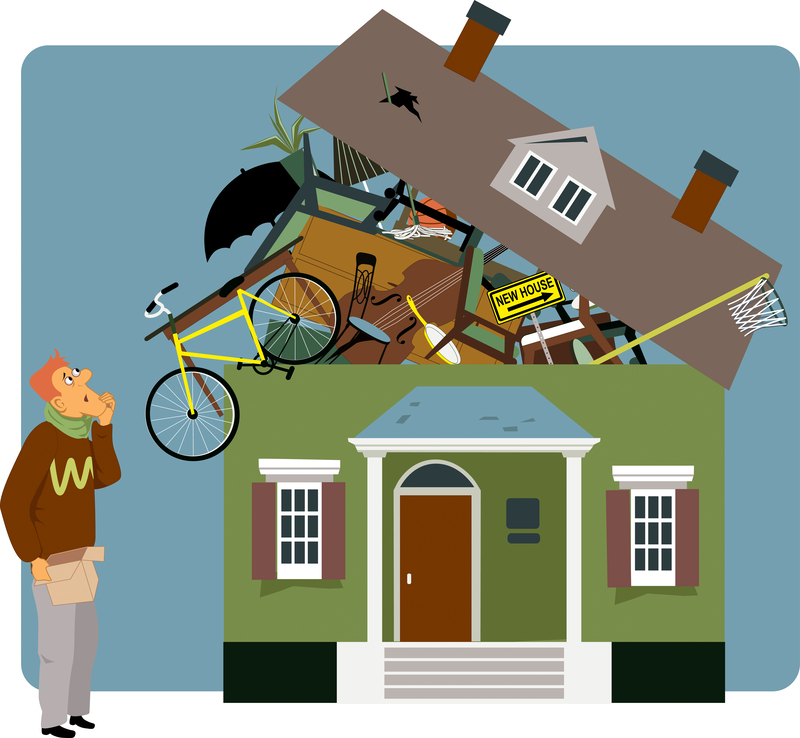The Costly Mistakes of DIY Piano Moves and How to Avoid Them
Thinking about moving your piano by yourself? While a DIY piano move may seem like an excellent way to save money, the risks and potential expenses involved are often overlooked. Without the proper expertise, tools, and planning, countless homeowners have found themselves facing unexpected damages and injuries that turn a money-saving decision into a costly mistake. In this comprehensive article, we will uncover the most common and expensive errors made during DIY piano moves, as well as expert strategies to prevent these mistakes -- ensuring your precious instrument arrives safely at its new home.
Understanding the Complexity of Piano Moves
Before you even touch a piano, it's crucial to understand what makes piano moving so uniquely challenging. Pianos are heavy, oddly shaped, and incredibly delicate. Their size, combined with intricate internal mechanics and a fragile exterior, means improper handling during a move can cause irreversible harm.
Types of Pianos and Their Specific Moving Needs
- Upright Pianos: Usually weigh 300-600 lbs., with a top-heavy structure that is easy to tip if mishandled.
- Grand Pianos: Can weigh 500-1200 lbs. Moving requires careful disassembly, protection of the lid, pedals, and legs, and strategic reassembly.
- Digital or Console Pianos: Lighter but contain vulnerable electronics that can be damaged by even mild shocks.
Trying to move any of these instruments without adequate preparation can lead to costly accidents--both to the piano and your property.

Top Mistakes People Make When Moving Pianos Themselves
1. Underestimating the Weight and Size
Many homeowners believe that with a few strong friends, moving a piano is no more challenging than moving a couch. This is one of the most common and dangerous misconceptions. Pianos, especially grands and uprights, are extremely heavy and unwieldy. Their weight is often unevenly distributed, increasing the risk of loss of control, slips, or tipping over.
Potential Costly Consequences:
- Severe injury to movers, including back injuries, crushed fingers, or worse.
- Damage to the piano's internal mechanics, such as bent strings or broken hammers.
- Property damage like scratched floors, dented walls, or broken stairs.
2. Insufficient or Poor-Quality Equipment
Moving a piano requires more than muscle. The right equipment is essential for safety and preservation.
- Padded blankets: Protect the piano's finish from scratches and bumps.
- Heavy-duty dollies and straps: Safely support and secure the instrument during transport.
- Piano skid boards: Specially designed platforms for vertical and grand pianos, enabling secure movement and loading.
- Ramp and lift systems: Necessary for navigating stairs or loading onto trucks.
Using ordinary moving tools or attempting a move without these supplies increases the risks significantly.
3. Poor Planning and Lack of Preparation
A successful piano move is all about foresight. Many DIYers fail to measure doorways, halls, and stairwells beforehand, leading to last-minute struggles and mishaps.
- Did you measure the piano AND every space it needs to pass through?
- Is your route free of tripping hazards?
- Do you have enough hands and coordination to lift/move safely?
Even a five-minute oversight can result in major financial and emotional setbacks.
4. Skipping Disassembly or Improperly Assembling/Disassembling the Piano
Grand pianos almost always need partial disassembly for moving, usually by detaching the legs and pedal lyre. Jumping into this process without knowledge or the right tools can permanently damage the frame, keys, and finish.
Forgetting to secure moving parts (like lids or pedals) leads to knocks or breakage, and these parts are expensive to repair or replace.
5. Neglecting Weather and Environmental Conditions
Pianos are very sensitive to moisture and temperature. Rain, snow, or even high humidity can warp wood and rust metal parts. DIYers often misjudge or ignore local weather conditions, exposing the instrument to damage during transit.
6. Failing to Protect Floors, Stairs, and Walls
A heavy piano scraping across hardwood or tile can leave deep gouges. Even with the best intentions, navigating tight corners or narrow staircases increases the risk of broken banisters, holes in drywall, or chipped paint.
The repairs to your home may eclipse the actual value of the piano!
7. No Insurance or Inadequate Coverage
If something does go wrong, are you covered? Most homeowners insurance does not cover damage during moves, especially if they're done without professional assistance. The lack of coverage can turn a minor mistake into an expensive financial loss.
Hidden Costs of DIY Piano Moving
The greatest mistake many DIY movers make is focusing only on the upfront savings. In reality, the true cost of a failed piano move can be extraordinary.
- Repairing your piano: Fixing scratched finishes, broken strings, misaligned keys, or damaged pedals may cost hundreds to thousands of dollars.
- Healthcare costs: Injuries during piano moving are common--think crushed fingers, strained backs, or herniated disks.
- Home repairs: Fixing banisters, door frames, flooring, or walls can add up quickly.
- Rental equipment: High-quality moving equipment rentals may approach the cost of hiring a specialist.
- Lost time and frustration: DIY moves often take twice as long (or more) compared to using professional piano movers.
When you consider the value of preserving your instrument and your property, the up-front savings of a DIY approach often disappear.
Expert Tips: How to Avoid Expensive Piano Moving Mistakes
1. Recognize When to Call the Professionals
The safest, most reliable way to ensure your piano arrives intact is to hire specialized piano movers. These professionals have:
- Experience with different types of pianos, staircases, and unique architectural obstacles.
- The proper tools and techniques to protect both your piano and your property.
- Insurance coverage to safeguard against unforeseen damages.
A reputable piano moving company can assess the situation, plan routes, and deliver peace of mind. In almost every case, the cost of hiring professionals is far less than paying for repairs or injury recovery.
2. Prepare and Measure Thoroughly
Whether you decide to go DIY or hire help, meticulous preparation minimizes risk.
- Measure the piano and every doorway, hallway, and stairwell on the moving route.
- Clear all obstacles ahead of time--rugs, furniture, clutter.
- Plan out each phase of the process, especially complex maneuvers like turning corners or descending steps.
3. Use Only Proper Equipment
If you still choose to move your piano yourself, never skimp on equipment. Rent or purchase:
- Professional-grade piano dollies and skid boards.
- Padded moving blankets and wraps.
- Strong moving straps for lifting and controlling the weight.
- Protective gear for your floors, stairs, and walls.
4. Recruit Experienced Help
Piano moving requires more than brute strength. Ideally, your helpers should have some experience moving heavy or bulky objects--and know how to follow instructions. Communicate clearly, assign roles, and make sure everyone understands the plan.
5. Protect Your Instrument and Home
- Wrap the piano completely with thick moving blankets, securing them with tape or straps.
- Disassemble legs and pedals if moving a grand piano--store parts in padded bags or boxes.
- Shield door frames and banisters with towels or temporary padding.
- Lay down runners or plywood paths to prevent dents and scratches to floors.
6. Monitor Weather Conditions
Schedule your move for a day with clear, dry weather. Use shrink-wrap to guard against moisture absorption. Allow your piano to acclimate in its new location before tuning--rapid changes in temperature/humidity can throw it out of tune or even crack the wood.
7. Insure Your Move
Check your homeowner's policy to see what's covered during a move--often, damage caused by unlicensed movers (even yourself) is excluded. If you must move the piano, consider purchasing short-term moving insurance for valuable items. Peace of mind is worth the investment.
Why Professional Piano Moving Is Usually Worth the Investment
When weighing the cost of hiring piano movers against potential losses from DIY mishaps, most piano owners realize the up-front expense is justified. Professional piano movers:
- Are trained and equipped to handle pianos of all sizes and styles safely.
- Significantly reduce risk of injury, property damage, or costly repairs.
- Provide insurance coverage that protects you and your instrument.
- Often deliver faster, more efficient results than any DIY team.
Your piano is more than a piece of furniture--it's a treasured instrument, often irreplaceable in both monetary and sentimental value.

Piano Moving FAQs: Avoiding Mistakes and Saving Money
Q: Can I move a small upright piano myself?
Technically, yes--but risks remain. Even smaller upright pianos are awkward, heavy, and delicate. If you attempt a DIY piano move, follow all safety protocols, use the right gear, and recruit knowledgeable help. Weigh the cost of professional movers against potential repair costs.
Q: What should I do if my piano is damaged during a move?
Stop moving immediately. Document all damage with photos. Contact your insurance company (if covered) and a certified piano technician for an assessment. Avoid playing the instrument until it has been checked for internal damage.
Q: How much does hiring a professional piano mover cost?
Prices vary depending on distance, piano type, and specific challenges. On average, expect to pay between $200 and $600 for local upright moves, and $400 to $1,000 for complex grand piano moves. The investment is well worth avoiding potential thousands in damages.
Q: Will moving my piano affect its tuning?
Most pianos will need to be tuned after a move, especially if exposed to temperature or humidity shifts. Allow the piano to acclimate for 2-3 weeks before scheduling tuning by a professional.
Conclusion: Protect Your Piano and Your Wallet
Moving a piano is a delicate, complex task--one that carries unique risks for costly mistakes when attempted without the right experience and equipment. By understanding the challenges, planning carefully, and recognizing when to call in professionals, you can avoid lengthy repairs, expensive medical bills, and irreplaceable losses. Whether for your prized grand or your family's cherished upright, trust the experts whenever possible--and always prioritize safety over short-term savings.
Don't let DIY piano moving become a regretful chapter in your piano's story. Make every note count by moving it the right way.



